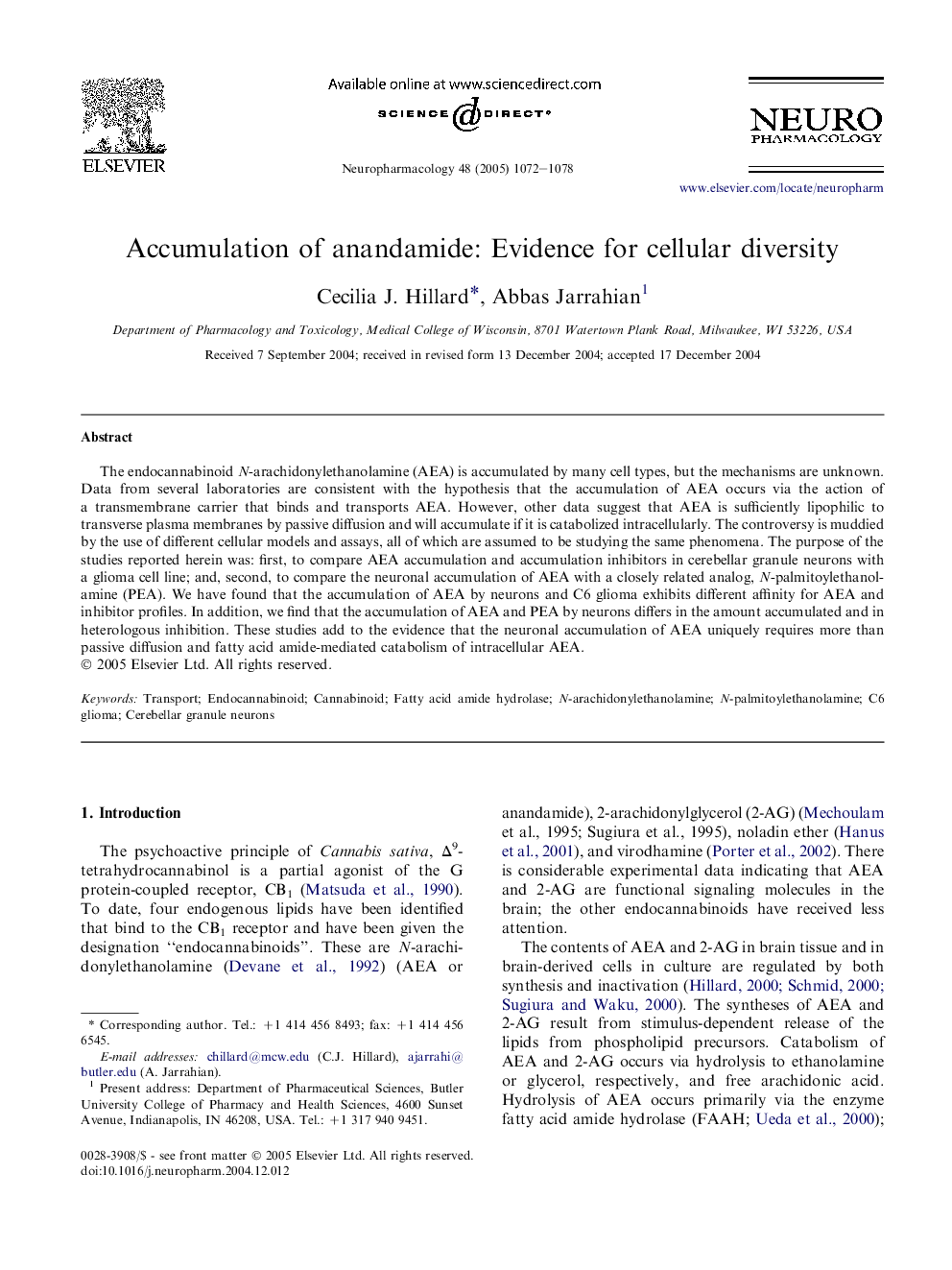| Article ID | Journal | Published Year | Pages | File Type |
|---|---|---|---|---|
| 8998412 | Neuropharmacology | 2005 | 7 Pages |
Abstract
The endocannabinoid N-arachidonylethanolamine (AEA) is accumulated by many cell types, but the mechanisms are unknown. Data from several laboratories are consistent with the hypothesis that the accumulation of AEA occurs via the action of a transmembrane carrier that binds and transports AEA. However, other data suggest that AEA is sufficiently lipophilic to transverse plasma membranes by passive diffusion and will accumulate if it is catabolized intracellularly. The controversy is muddied by the use of different cellular models and assays, all of which are assumed to be studying the same phenomena. The purpose of the studies reported herein was: first, to compare AEA accumulation and accumulation inhibitors in cerebellar granule neurons with a glioma cell line; and, second, to compare the neuronal accumulation of AEA with a closely related analog, N-palmitoylethanolamine (PEA). We have found that the accumulation of AEA by neurons and C6 glioma exhibits different affinity for AEA and inhibitor profiles. In addition, we find that the accumulation of AEA and PEA by neurons differs in the amount accumulated and in heterologous inhibition. These studies add to the evidence that the neuronal accumulation of AEA uniquely requires more than passive diffusion and fatty acid amide-mediated catabolism of intracellular AEA.
Keywords
Related Topics
Life Sciences
Neuroscience
Behavioral Neuroscience
Authors
Cecilia J. Hillard, Abbas Jarrahian,
